NVIDIA Files Patent Infringement Complaints Against Qualcomm & Samsung
by Ryan Smith & Jarred Walton on September 4, 2014 9:00 PM EST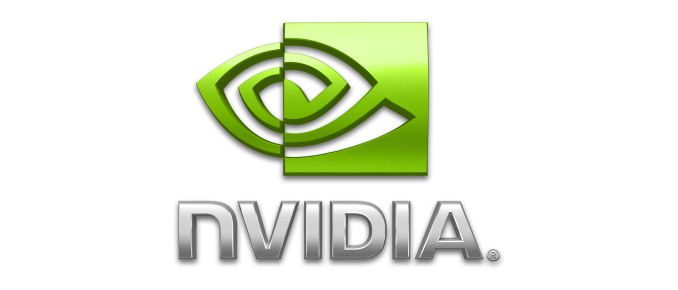
In a surprising move this afternoon, NVIDIA has announced that they will be filing patent infringement complaints against both Qualcomm and Samsung. This complaint is centered around the alleged use of NVIDIA patented GPU technologies in both Qualcomm and Samsung’s SoC’s and the unwillingness of the respective companies to enter in to a licensing agreement. NVIDIA has filed complaints with both the US Federal Court and the International Trade Commission, and in the case of the latter is seeking an injunction against Samsung to prevent them from shipping several recent products, including the Galaxy S5, Galaxy Note 4, and Galaxy Edge.
Starting from the top, NVIDIA is of course no stranger to high profile lawsuits. However those suits are typically on the defensive side, such as the company suing Intel over the loss of rights to make chipsets for their products, or being sued by Rambus over the use of DDR signaling. This suit by comparison is unabashedly offensive – one NVIDIA calls the first time they have ever initiated a patent lawsuit – with NVIDIA going to the courts arguing that their GPU patents are being violated and seeking a resolution and compensation for those violations.
The use of patent infringement suits in the technology space is nothing new, and even in the GPU space they’re somewhat common. NVIDIA in particular is still the 800lb gorilla of the GPU world by patent portfolio size (and arguably by GPU R&D), so how they interact with other companies tends to depend on the size of those companies and what patents they have in turn. In the PC space NVIDIA and AMD have relatively strong cross-licensing agreements – AMD being the next largest GPU developer – followed by Intel who settled a suit out of court with NVIDIA 3 years ago over continued access to NVIDIA’s patents.
In the mobile SoC space however there are a much larger number of GPU manufacturers, and overall there is still a certain “wild west” aspect to patent licensing and infringement. On top of the larger number of GPU manufacturers there are even more companies involved once you discuss integration. In this case an Imagination PowerVR GPU may be licensed by an SoC integrator such as MediaTek, who in turn will sell the complete SoC to the device manufacturer such as HTC. In which case it’s not at all clear who is responsible for patent licensing, or indeed if parties are responsible at each and every step.
This leads us to today’s suit against Qualcomm and Samsung, as it’s based around both alleged patent infringement and arguments about who’s ultimately responsible for those infringements. As far as patents go NVIDIA is going to the courts with a number of patents, with some patents going as far back as the GeForce 2 era and even patents first devised by 3dfx (before NVIDIA acquired them). At first glance these appear to be technologies that are fundamental to modern GPU designs, in which case it is admittedly difficult to imagine other GPU designs not infringing on these patents.
One such example is called the ‘063 patent, which involves on-chip tiling and early visibility testing, and was first developed by a company purchased by 3dfx. This is a technique that all modern GPUs implement in some form, though these days the methods are much more advanced.
"The ʼ063 Patent was directed to this technology, which combined on-chip tiling with early visibility testing in the graphics pipeline. All of Samsung’s mobile products use GPUs that implement this patented invention."
As is the case whenever anyone files a patent infringement suit, NVIDIA is telling the press and investors that they believe they have a strong case with ample evidence of infringement. The company ultimately believes that they would be victorious in court, though in many of these technology patent suits we see the involved parties settle out of court before any trial reaches its conclusion. Meanwhile if the case does go to trial, then NVIDIA has requested a full jury trial rather than a trial by judge.
Along with NVIDIA’s patent infringement claims, a big part of NVIDIA’s case will rest on allegations that Qualcomm and Samsung actively know about at least some of this infringement and have refused to settle the matter before now. NVIDIA’s claim notes that the company has been attempting to reach a license agreement with Samsung and Qualcomm since 2012, and that today’s suit is a result of their inability to come to an agreement over the last 2 years. Consequently because NVIDIA has been talking to these companies since 2012, they assert that this means that Qualcomm and Samsung have known about this infringement since NVIDIA presented their patents and proposed licensing agreement, meaning they have been willfully infringing on at least some of the involved patents over the last 2 years.
Complicating the matter is the question over who is responsible for patent violations. NVIDIA’s complaint alleges that Samsung believes this to be a supplier problem – that any patent violations are the responsibility of the company who designed the GPU, be it Qualcomm, Imagination, or ARM. As a result Samsung is unwilling to settle, and for that matter Qualcomm is no more willing to settle than Samsung is, though the complaint does not make it clear whether this is a disagreement over the patent claims or a belief that it’s the customer’s (Samsung’s) problem.
Ultimately this suit is focused around Samsung, as Samsung is both a device integrator and the manufacturer of the Exynos line of SoCs. Meanwhile because Samsung also uses Qualcomm’s Snapdragon SoCs in a number of products (including the North American editions of many phones), Qualcomm is being collared in to the suit on the basis that they are supplying some of the infringing GPUs.
This suit is not limited to just Qualcomm’s Adreno GPUs however, and also extends to ARM Mali and Imagination PowerVR GPUs as well, as Samsung has used both of those GPU families in their various Exynos designs. Overall NVIDIA believes that the Adreno 200, Adreno 300, and Adreno 400 families all violate NVIDIA’s patents, while the Mali-T628 and the PowerVR SGX (Series 5) are also explicitly named in claims.
As a result virtually all of Samsung’s modern products are affected by this suit. As part of their request for relief, NVIDIA is asking that the ITC prevent Samsung from importing products using the infringing SoCs, which would include all of Samsung’s latest products including the Note 4 and its Edge variant, the Galaxy S4 and S5, and the latest Tab tablets. As Qualcomm’s SoCs are among the accused products, this injunction would presumably extend to Snapdragon imports as well, which given Qualcomm’s heavy presence in high-end phones and tablets in the United States would make the final list of affected products far larger. However it should be noted that immediate injunctions are very rare, so it’s unlikely that an import ban would go into effect before the conclusion of the trial (if it even makes it that far).
Meanwhile in the Federal Court complaint, NVIDIA is asking for both unspecified damages (i.e. a monetary reward) and for further injunction to prevent Samsung and Qualcomm from infringing on NVIDIA’s patents. Though once again the real goal here seems to be about forming a licensing agreement rather than preventing Qualcomm and Samsung from shipping SoCs.

One of the accused infringing products: Samsung's Galaxy S5
One of the big questions of course is why NVIDIA is going after these two companies in particular, especially since they are essentially claiming that ARM Mali, Imagination PowerVR, and Qualcomm Adreno GPU families all infringe on some of these patents. The answer in turn from NVIDIA is that Samsung is the largest phone supplier in the United States, and Qualcomm in turn is the largest SoC provider while also providing the SoCs for most of those Samsung phones, so it makes sense to start at the top. NVIDIA is not talking about further legal action at this time, but the outcome of this case could have an impact on whether NVIDIA targets the suppliers (e.g. ARM and Imagination) or goes solely after additional customers and their ilk. Ultimately who is responsible for this infringement – can and should Qualcomm indemnify their customers against infringement claims like these – may be just as important as the alleged infringement itself.
Which on that subject, as part of their claims NVIDIA also points out their existing license agreement with Intel. In this NVIDIA notes that their Intel agreement covers all SoCs and CPUs shipped by Intel, including those incorporating Imagination’s PowerVR GPUs. So in the case where the SoC integrator is responsible, their licensing agreements would seem to cover any infringement regardless of who designs the infringing GPU.
Wrapping things up, at this time Qualcomm and Samsung have yet to respond to this suit. However given the scale of the suit, the complexity of the underlying technology, and the vast number of products involved, barring a quick out of court settlement this is expected to be a case that could go on for years. And even longer if it goes to appeals and/or triggers counter-suits. Altogether the ITC should have an initial response to the filing within 35 days, and if no settlement is reached the expected court date is in 2-3 years. To that end today's suit from NVIDIA will be the start of a much longer process for Qualcomm, Samsung, and the larger GPU industry as a whole.
Source: NVIDIA


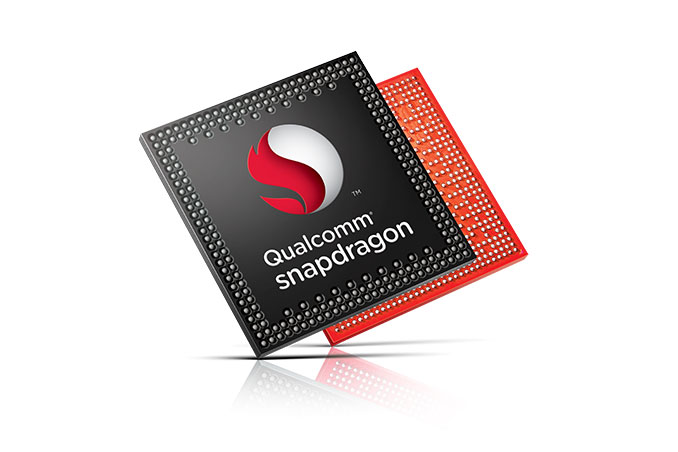
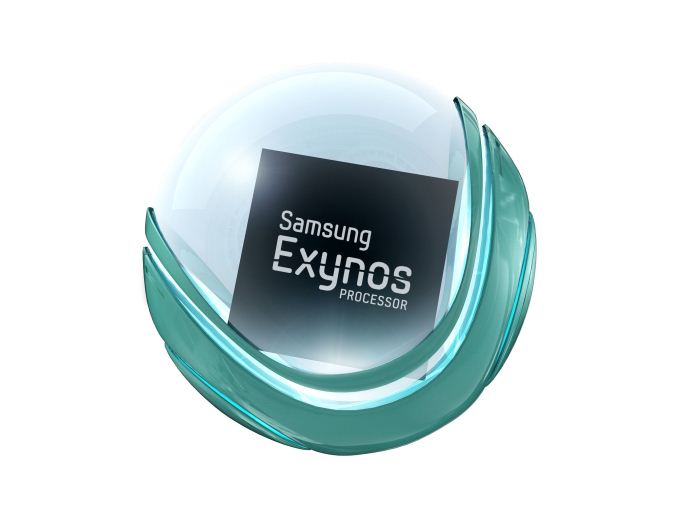
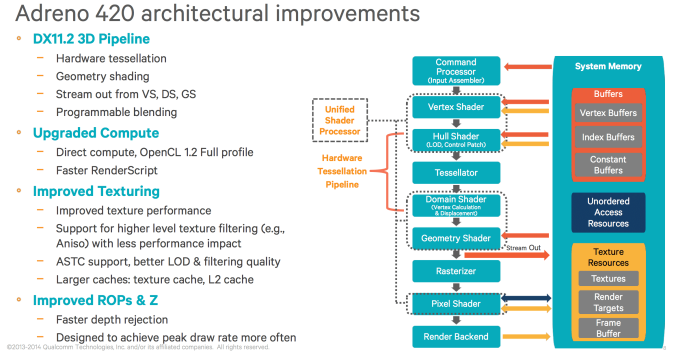
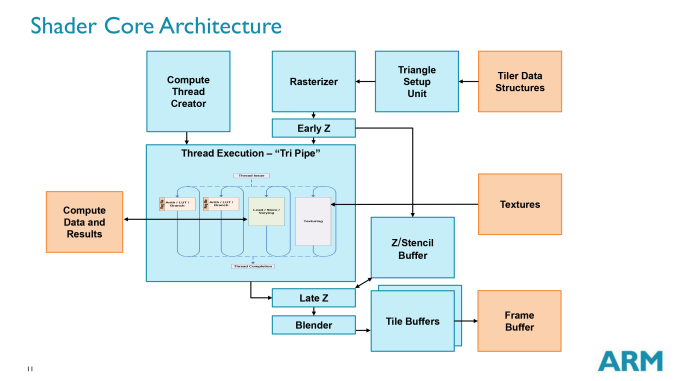
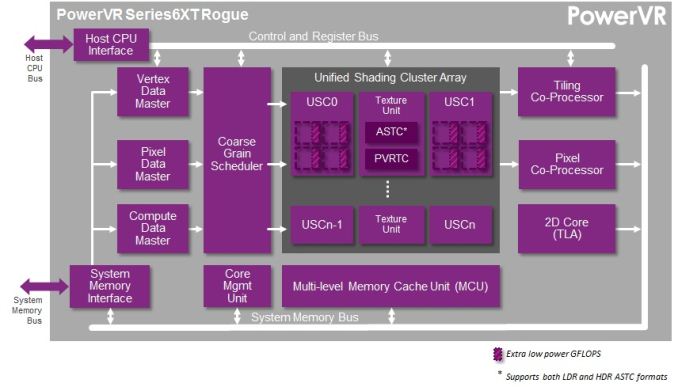








77 Comments
View All Comments
dylan522p - Saturday, September 6, 2014 - link
Nvida already said K1 was not for phones 8 months ago.... They need to catch up in radio before they try to push back in so they went with a tablet SOC. Of course some dumbass chinese companies will go ahead and put it in a phablet.formulav8 - Wednesday, September 10, 2014 - link
haha, probably righttuxRoller - Thursday, September 4, 2014 - link
This seems dangerous.I'd Imagine that there are others with very extensive, mobile specific, gpu portfolios.
Perhaps Qualcomm, or samsung, will just buy nvidia?
ArthurG - Thursday, September 4, 2014 - link
Nvidia is by far the biggest innovator in graphics. Their patent portfolio is unmatched and they fill hundreds of new patents every each. Not the ones like rectangles with round corners, but fundamental stuff (like the old ones) and new highly technical ones. In their field, Nvidia has no match and if they want, they can sue every other companies making GPUs. It's not an hazard if Intel pays Nvidia hundreds of millions in licence each year...tuxRoller - Friday, September 5, 2014 - link
The intel licensing has other factors.Img tech has been the major mobile gpu designer for more than an decade (and in existence since 1994), and make the lowest overhead drivers around. If they don't have patents all over the place I'd be amazed.
There's something behind this that's not obvious. Apple is the BIGGEST seller of img tech around. Why not go after them?
djgandy - Friday, September 5, 2014 - link
The US patent system is a joke though, hence ImgTec won't have a huge portfolio because in the UK you can't file a patents for such generic concepts or things that are clearly just an evolutionSome of these patents are valid ideas but in no way unique or innovative. What you see with some of these patents is a company registering an idea which was obvious, but simply not implementable in the late 90's because the chip would have been the size of a desk. Programmable pipeline with instruction set. Who could have thought that up?! Sumarised to, instead of the fixed pipeline with complex groups of operations we have currently, we are going to stick an FPU in the mix and you can use the fixed set of instructions that provides instead.
The innovation in GPU's is in the implementation details, right deep down. That is why Nvidia can't get their power consumption low enough despite their huge patent portfolio.
tuxRoller - Friday, September 5, 2014 - link
Bitboys did a lot of fundamental work before Nvidia even existed. Attacking a company with the patent portfolio the size of Qualcomm isn't smart. Again, maybe Nvidia is looking to be bought out? Either Samsung or Qualcomm could do so easily.TheJian - Saturday, September 6, 2014 - link
Qcom doesn't have tons of gpu patents. You're mistaking them for a gpu company when they are a modem company. Note they're in trouble for those too though, and Icera is mentioned in the EU suit against Qcom...LOL. NV owns them now, so another suit at some point I guess...LOL.I think Nvidia is looking for a large payout for willful infringement of their tech. It might take a few years, but the bills will be big unless they settle if proven real, and knowing they did it for two years NOT settling, will make the bill larger to any jury. You have to be willing to sell for it to be easy to be bought, as a hostile takeover of a company this size would not be simple. There is no reason to sell if you love what you're doing (are fairly young, as Jen is) and know you have the enemy by the financial balls anyway. He has at least a dozen years+ left in him and seems to love getting on stage, so can easily wait this out.
Nvidia isn't a sue happy company, so you'd have to assume they believe they'll win. Also, the choice of a jury over a judge says they're looking to score big and think the evidence will give them a big payout. It's too easy to pay off a judge these days, so they avoid that and people love to stick it to a big company like Samsung (35B profits, NOT a USA company either) when given the chance vs. a little guy with cold hard evidence ;)
But again, modem patents won't save your gpu from litigation and bitboys didn't have a MASSIVE gpu portfolio (they never even got a gpu out the door for desktops). I don't see how they could have many gpu patents being 20yrs late to this game (playing actual games like a PC now, the previous mobile crap never did anything like the last 2yrs) and buying an AMD failure which was bitboys vaporware. But I guess we'll find out in a few years.
Attacking a company that you know is infringing your patents is VERY smart. I'm sure they are aware of whatever bitboys had at the time and since the team was bought. Also, I'm not sure if ONLY the team was bought, or actual IP too and if so how much. Again we'll see soon. They were only founded 2yrs before NV, so it's not like they lasted long, nor had any huge lead and like I said it led to no product. Their R&D was on early mobile stuff, and most of the real advancements didn't come until the late 90's and beyond for gpus. I doubt their early patents would be relevant to tech that would be infringing today. It also says something that even after AMD bought them they were useless and sold. Qcom obviously made something out of them, but before that like you're talking here, were fairly useless. Bitboys didn't make a dime for 11yrs, then in 2006 bought by ATI for 44mil. Remember ATI went for ~$5.4B in comparison (though only worth 1.8B IMHO, and the 3B write-down proved it), so how much did the have that was worth anything? Again, Qcom is a WIRELESS giant, not a gpu giant. There wasn't much graphical innovations going on in mobile until the last few years (and they're just re-treading the desktops really, nothing new, IE - NV/AMD already been there done that, time to pay one or the other probably). You're making bitboys much bigger than they ever were. Three or four vaporware products isn't something to brag about right?
tuxRoller - Saturday, September 6, 2014 - link
You're forgetting that Qualcomm is a far bigger company than Nvidia, and they could devote more resources to GPU development than Nvidia even without it being a core competency. I don't think they do, but their GPU IP stretches back to almost a decade before Nvidia existed. Lastly, with their massive resources they are focused on a single market: mobile. Nvidia has to cater to all markets, hence their marketing jabber about Maxwell being all things to all people. Saying that is a bit equivalent to saying a CPU is more efficient at signal processing than a DSP. That's a tradeoff that's not going away until there's a major design breakthrough.BTW, I'm not saying Qualcomm cares enough about this market to either buy Nvidia out (if the suit is successful and the result sufficiently high then maybe) or start spending more on r&d and hiring, but IMG tech already puts out a more efficient product than anyone right now (including better drivers as judged by overhead).
TheJian - Monday, September 8, 2014 - link
https://www.google.com/patents/US6198488https://www.google.com/patents/US6992667
https://www.google.com/patents/US7038685
https://www.google.com/patents/US7015913
https://www.google.com/patents/US6697063
https://www.google.com/patents/US7209140
https://www.google.com/patents/US6690372
You can read the patents for yourself. The problem for qcom is the were making mobile stuff that probably didn't tread on Nvidia's patents until now that they are doing FAR more complicated stuff. Note all the dates of the patents. They are mostly for stuff that is going on today in desktops, and therein lies the problem for qcom. Their patents (if they have many) are not for doing things like we do today on desktops (and phones/tablets now are doing). You didn't game on a phone 10yrs ago.
The size of a company means nothing in regards to who owns a patent. You either have the patent or pay the guy who does no matter how small he is. IMG was put in phones by AMD/NV :) Meaning, they couldn't cut it with the desktop world and were driven into mobile. Not sure I agree with your claims anyway but I'm fairly sure they don't own a ton of patents in the areas desktops have been playing for a decade either. You can have all the OLD mobile patents you want, and none of them are involved in playing halflife2 etc right? That's just an example but you get the point (far more complicated than some dots game like supersnake etc, read the patents). The patents being argued over here are displaying today's PC/console games not the crap from the last decade of mobile. Qcom cares about what is evolving in their phone/tablet market, or they'll lose it, as it moves to games being #1. They have no choice. Their gpu ip may strech way back but they had no reason to be developing patents for gpu tech they wouldn't use for a decade or more, that they now obviously need.
What driver info do you have vs. K1 drivers that shows IMG has better ones?